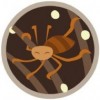 Researchers at the University of Queensland, in St Lucia, Australia, evaluated tea tree oil + lavender oil.
Researchers at the University of Queensland, in St Lucia, Australia, evaluated tea tree oil + lavender oil.
First, the details.
- 123 people with live head lice were assigned to a treatment group.
- A pediculicide containing melaleuca oil (tea tree oil) and lavender oil
- A head lice “suffocation” product
- A product containing pyrethrins and piperonyl butoxide (Medi-Lice, Pronto, R & C, Tegrin LF).
- The head lice products were applied according to the manufacturer’s instructions.
- The presence or absence of live lice 1 day following the last treatment was determined.
- The evaluator was not aware of the treatment given — single blind.
And, the results.
- The percentage of people louse-free 1 day after the last treatment:
- Tea tree oil + lavender oil product (98%)
- Head lice “suffocation” product (98%)
- Product containing pyrethrins and piperonyl butoxide (25%) — significantly less than the other treatments
The bottom line?
The authors concluded, “The high efficacy of the melaleuca oil (tea tree oil) and lavender oil product and the head lice “suffocation” product offers an alternative to the pyrethrins-based product.”
With respect to prevention of infestation, researchers at James Cook University, in Townsville, Australia, reviewed botanical and synthetic substances to prevent head lice infestation. They concluded, “Tea tree and peppermint caused the most repellence, and tea tree and lavender prevented some blood feeding on treated skin. Comparatively, tea tree oil was most efficacious, with DEET ranking equal second overall with coconut, peppermint, and a botanical mixture.”
8/27/10 23:16 JR